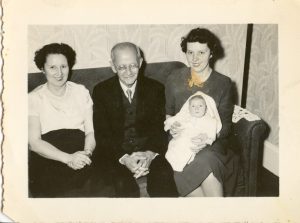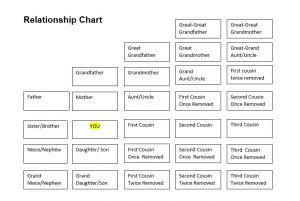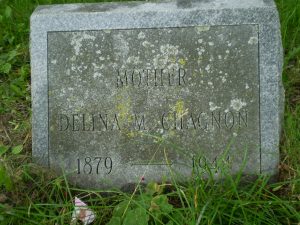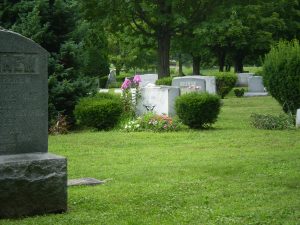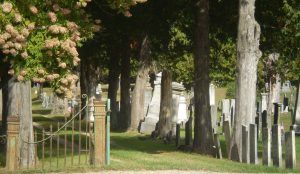
With Spring finally here in most parts of the United States, it is time to be thinking about checking up on the last resting places of our loved ones who have gone on before us.
Whether its time for your annual visit or maybe you haven’t been for some time, spring is a great time to plant and do some general maintenance. Most people visit around Memorial Day. Cemeteries usually have caretakers that mow the lawn and pick up litter, but they don’t usually do any individual gravestone management. Before you head out you may want to think about bringing some supplies in case you need to clean the gravestones themselves as well as planting flowers etc.
 Over the course of time signs of damage can begin to show on gravestones. Weather and pollution can create many different situations that can cause serious damage.
Over the course of time signs of damage can begin to show on gravestones. Weather and pollution can create many different situations that can cause serious damage.
By following a simple cleaning procedure that is used by professional conservators, you can easily keep your loved ones gravestones clean, readable and prevent any future deterioration.
But before you tackle cleaning a stone you first will need to determine if the gravestone really needs to be cleaned. It can be easy to mistake the natural patina of aging for dirt. The color of marble gravestones can change naturally over the course of time. You need to use care when cleaning, because you can cause more damage to a gravestone that is already flaking or peeling, so these stones may be best left untouched or looked at by a professional conservator. So only clean a gravestone if it really needs it.

Things to look for when a gravestone is in need of cleaning are: plant growth, soiling, and staining which are caused by things like moss, lichen, algae, fungi, mold, and other plant life. These types of things growing on gravestones can be very harmful and if left untreated, these growths can cause gravestones to weaken, crack, and split over time.
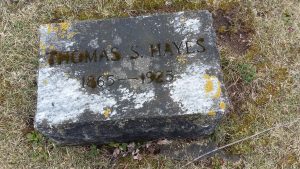 When looking for algae, fungi, and lichen, they can be green, gray, black, red, orange, yellow, blue, or even brown in color. All these organisms can damage the gravestone by trapping moisture on the stone and just beneath the surface of the stone and then when there is a temperatures change, this moisture can freeze and thaw causing expansion and contraction within the stone, which leads to weakening or cracking the stone. Plants, like grass, ivy, moss, trees, bushes and ferns that grow on or near gravestones can be damaging also, because their roots can penetrate the stone and cause splitting, or can cause the stone to shift, putting it off balance and possibly falling over and breaking. So when you are doing your plantings do make sure they have room to grow and not interfere with the stone. And when your plantings become too mature, dig them up and plant small young planting again.
When looking for algae, fungi, and lichen, they can be green, gray, black, red, orange, yellow, blue, or even brown in color. All these organisms can damage the gravestone by trapping moisture on the stone and just beneath the surface of the stone and then when there is a temperatures change, this moisture can freeze and thaw causing expansion and contraction within the stone, which leads to weakening or cracking the stone. Plants, like grass, ivy, moss, trees, bushes and ferns that grow on or near gravestones can be damaging also, because their roots can penetrate the stone and cause splitting, or can cause the stone to shift, putting it off balance and possibly falling over and breaking. So when you are doing your plantings do make sure they have room to grow and not interfere with the stone. And when your plantings become too mature, dig them up and plant small young planting again.
Another component of plants that can be damaging is the acid they contain. 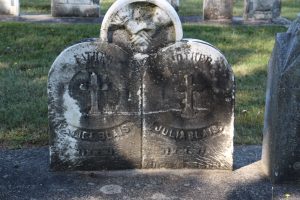 Marble is composed mainly of calcium carbonate. Lichen secretes an acid that dissolves calcite and can cause serious damage to the surface of marble gravestones to the point that they become unreadable.
Marble is composed mainly of calcium carbonate. Lichen secretes an acid that dissolves calcite and can cause serious damage to the surface of marble gravestones to the point that they become unreadable.
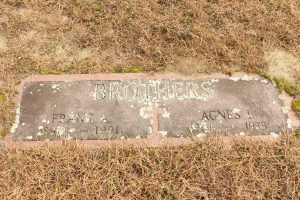 Gravestones that are flat on the ground are very easily damaged by dirt, leaves, grass clippings and even mud. The minerals in soil such as iron or copper can stain gravestones and sandy soils can act as sand paper and wear the outer surface of a stone. Upright gravestones can also be damaged from strong winds particularly if they are in a sandy region.
Gravestones that are flat on the ground are very easily damaged by dirt, leaves, grass clippings and even mud. The minerals in soil such as iron or copper can stain gravestones and sandy soils can act as sand paper and wear the outer surface of a stone. Upright gravestones can also be damaged from strong winds particularly if they are in a sandy region.
Pollution from city traffic and factories carry pollutants such as acid rain, that can change the appearance of gravestones. Even bird droppings can stain gravestones. Gravestones near trees or bushes are at risk for staining from sap. Overhanging tree branches can drip their sap onto gravestones. The sap contains resins which can cause staining and be difficult to remove. So again, be aware of what you are planting for plants and how large they will grow.
Here is a list of things that are helpful in cleaning your gravestones:
- Water
- Spray bottle, bucket, or hose
- Soft plastic scraper
- Soft bristle brushes
- Wooden pick
- Biological Solution
- Safety glasses
- Gloves
Weather related suggestion:
When planning a visit to the cemetery, it would be best if it is an overcast day or partly cloudy. This will be more comfortable for you and the cleaning process will not dry as quickly. This is especially important if the gravestones you are cleaning and doing plantings for are in direct sun. Or you possibly go early in the morning or closer to early evening time when the sun is not so hot.
Water is the most important thing to bring if the cemetery does not provide it. If they do provide a water source, then remember to bring a bucket or jug just in case there isn’t one available. Water should be used first to gently wash away dirt, soil, and dried leaves or grass clippings. Stones is very porous and absorbent and if using a cleaner, spraying with water will help keep the cleaner more on the surface.
When you are ready to clean the gravestone, wet the entire surface with water. Use a soft plastic scraper to gently remove plant growth, such as moss or lichen. Scrapers should be softer than the stone.
When using a brush be sure to use a soft bristle brush. The brush should be made of natural fibers or soft nylon. Be sure to use brushes that do not have any metal or rough edges as it could accidentally scratch the stone. You may need to use a variety of brush sizes for different areas of a gravestone. Even an old toothbrush are work pretty well on lettering or engraved designs.
A wooden pick can be useful to remove lichen or moss that may be growing in indentations or engraved lettering.
Be sure that the surface of the stone is wet before you use cleaners and continue re-wetting the stone while you are working on it to avoid allowing the cleaner from to dry on the surface.It is best to start cleaning from the bottom of the stone and work your way up. This will minimize the effects of streaking if you are using a cleaner.
Cleaners used on gravestones should be the gentle possible. D2 Cleaning Solution. D2 is a gentle biocide and very effective for gravestones that are covered in biological growth such as lichen, moss, fungi, algae, and plants. D2 Biological Solution was designed by conservators and is recognized as the official cleaner of the Department of Veteran Affairs National Cemetery Administration for cleaning U.S. military gravestones. There are several kinds of cleaners on the market. Before choosing one be sure to read the label, follow the manufacturer’s guidelines and make sure it is biologically safe and suitable for the type of gravestone you are cleaning, marble, granite or metal.
And don’t forget to wear Safety Glasses and Gloves for your own protection.
Work a small area at a time. Spray the cleaner generously on the area and allow the cleaner to sit on the stone for about 3-5 minutes. Then, gently scrub the stone in small circular motions with a soft brush. Work the cleaner into all indentations and lettering. Keep an eye on any damage to the stone and be careful that you are not applying too much pressure that could cause the damage to worsen. If you see flaking, stop and reassess where you should clean the area and think about whether you should consult with a professional.
If needed spray a second round of cleaner on the gravestone. Allow to sit again for about 5 minutes. Remember work in small sections. Keep the gravestone wet as you work by continually spraying it with water and cleaner.
Finally, rinse the stone when you are done cleaning, making sure not to leave any visible cleaner on the surface.
Cleaners such as D2 Biological Cleaner continues to clean the gravestones on its own for a few weeks after the initial cleaning. As the cleaner seeps into the pores of the stone it will kill more biological growth.
Here are a few reminders of what not to do:
- Never use common household cleaners such as bleach.
- Never use chemical cleaners that have strong acid or salt bases.
- Never use power tools, such as sanders or drills with wire brushes
- Never use power washers with pressure over 300 psi
- Never rub the gravestone surface with hard-bristled brushes
- Never scrape the gravestone surface with any metal
Here are a few reminders as to what you should do:
- Always use the gentlest cleaning method possible
- Read and follow product manufacturer’s guidelines
- Use safety practices such as gloves and eye protection.
- Test a small area before cleaning the entire headstone
- Keep the stone wet as you work
- Always get the approval of other family members before cleaning
If you are planting or digging up bushes or flowers you will need to bring:
- Shovel
- Hand saw
- clippers
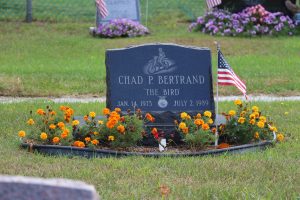
By maintaining and caring for the gravestones of your loved ones’ you are not only showing your love and respect and how much they mean to you, but you are helping to preserve their last resting place for future generations.
_________________

 My Ethnicity Estimate results shows that my DNA traces back to 8 Ethnicities, 97% from Europe, (43.1% Irish, Scottish, and Welch, 13.2% English, 5.9% Finnish, 4.9% Scandinavian, 21% Sardinian, 9.8% Greek, 2.1% from Northwest Africa. These results come from very early ancestry links.
My Ethnicity Estimate results shows that my DNA traces back to 8 Ethnicities, 97% from Europe, (43.1% Irish, Scottish, and Welch, 13.2% English, 5.9% Finnish, 4.9% Scandinavian, 21% Sardinian, 9.8% Greek, 2.1% from Northwest Africa. These results come from very early ancestry links.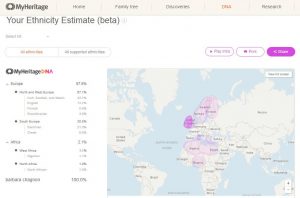 of my Ethnicity Estimates shows the approximate areas. Usually most companies that offer Autosomal DNA testing will give you an Ethnicity Estimate, but they may be different from company to company due to the formulations that they use. An Autosomal test is on your 22 Chromosomes which contain shared DNA from both your paternal and maternal sides
of my Ethnicity Estimates shows the approximate areas. Usually most companies that offer Autosomal DNA testing will give you an Ethnicity Estimate, but they may be different from company to company due to the formulations that they use. An Autosomal test is on your 22 Chromosomes which contain shared DNA from both your paternal and maternal sides family tree I was able to see how we are related on my paternal side. Not everyone that has a Match with you includes family tree information and not everyone is a member of MyHeritage.
family tree I was able to see how we are related on my paternal side. Not everyone that has a Match with you includes family tree information and not everyone is a member of MyHeritage.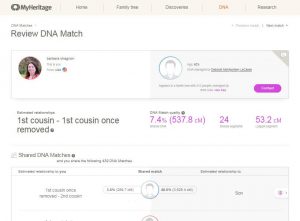
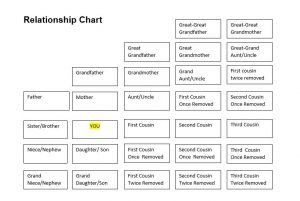
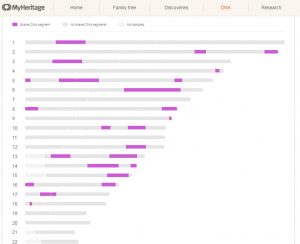
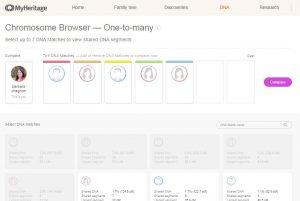

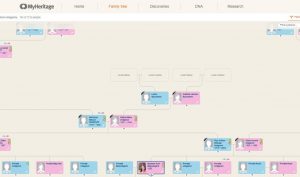

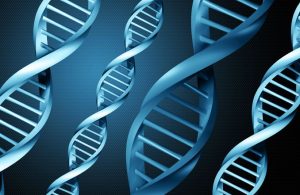 tools on their websites to help you to understand your results and connect with your matches.
tools on their websites to help you to understand your results and connect with your matches.